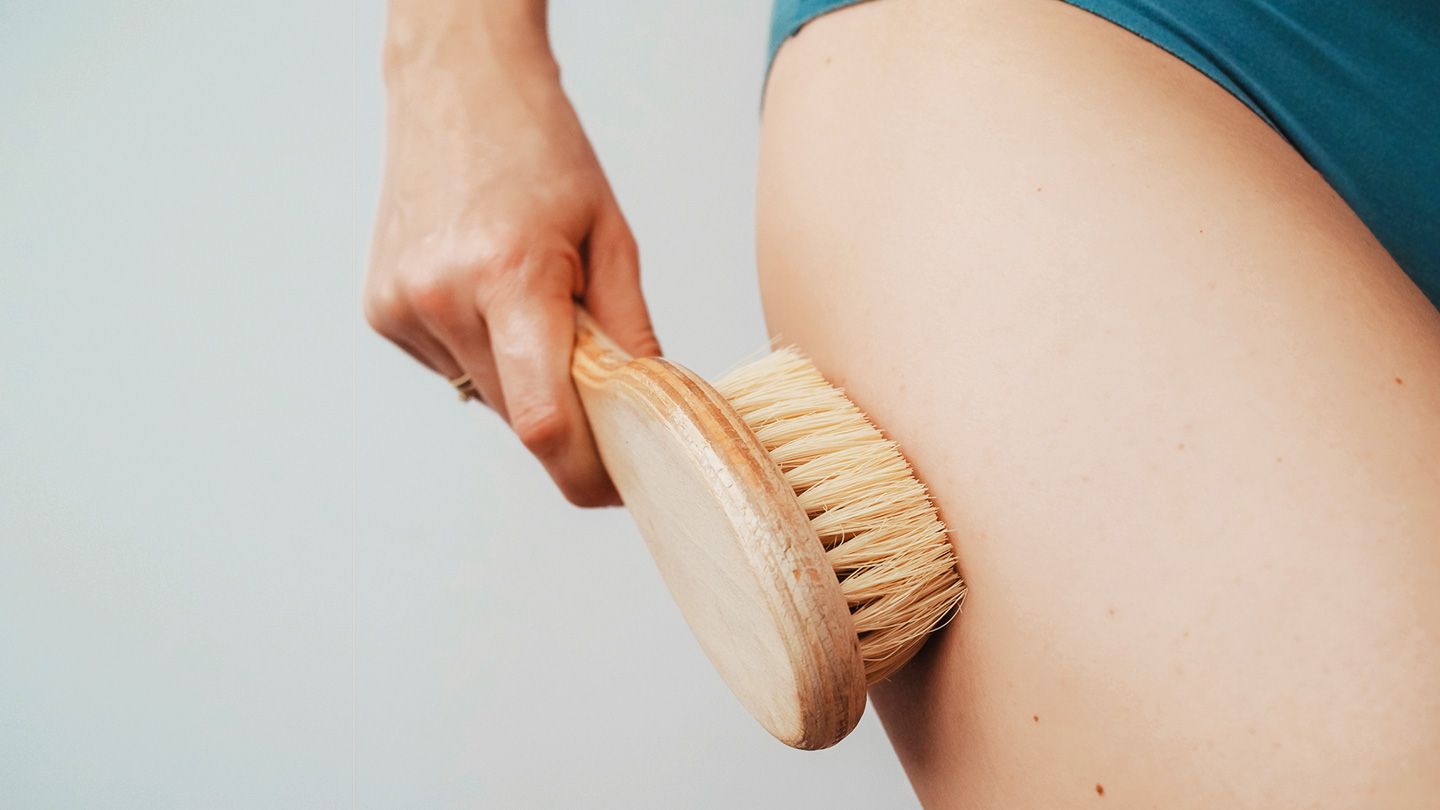Once you have spoken with a dermatologist or integrative healthcare practitioner and determined that this practice is appropriate and safe for you, based on your individual health status, you can use these tips from our experts’ experiences to get started.
Start Soft
Traditionally, dry brushing is performed with raw silk gloves, Haasl-Blilie says. However, many people prefer to use bath or shower brushes.
“I like a soft natural brush to start with,” Farris says. “Some people have very sensitive skin and can’t use anything that puts too much pressure on the skin.” But, brush stiffness is a highly individual preference, so experiment until you find the one that works best for you.
The texture should be pleasing to you and gentle on your skin, Haasl-Blilie says. Bonus tip: Look for a shower or bath brush with a long handle for hard-to-reach areas like your back.
Find the Right Pressure
You don’t have to apply much pressure to possibly have an effect on your lymph fluid.
“If you turn your forearm over and lay your index finger on the inside of your wrist, that’s the pressure you’re likely aiming for,” Haasl-Blilie says. If you use deeper pressure, it may not be as effective. “Your skin will get some benefit from exfoliation, but you’ll potentially miss the traditional benefits of targeting the lymphatic system,” Haasl-Blilie explains. Use enough pressure that the brush doesn’t slide off your skin, but not so much pressure that you feel it under your skin, she suggests.
Prioritize the Process
Some experts suggest that it’s best to dry brush immediately before showering in the morning. Haasl-Blilie recommends dry brushing in the tub or shower, “as skin cells will slough off and may leave a little mess.”
“It’s recommended that you move up and toward the heart with your movements,” Antonov says. Lighten your pressure if and when needed, and stop if your skin becomes red or irritated. Shower normally once you’re finished, and keep in mind that the dry brushing process should take no more than 5 to 10 minutes, Haasl-Blilie notes.
After showering, slather on body oil or lotion to replace lost moisture and help your skin barrier repair. “If you’re heading out into the sun, be sure to use SPF 30 or higher, as freshly exfoliated skin is more vulnerable to ultraviolet rays,” Antonov says.
Find Your Frequency
Some people can perform dry brushing four to five times per week, Haasl-Blilie says. However, others may be more sensitive to its stimulating effects and may need to stick to two to four sessions per week, she notes. People with sensitive skin may also need to limit their dry brushing.
Antonov suggests starting with only one to two sessions per week and seeing how your skin responds. If any flare-ups occur, be sure to notify your dermatologist or integrative healthcare practitioner, so that they can help you address your concerns.
Keep Your Brush Clean
Be sure to clean your brush after every few uses to clear out trapped impurities, Antonov says. “You can rinse with a gentle cleanser or shampoo and let the brush air-dry fully before using it again.”
Read the full article here




